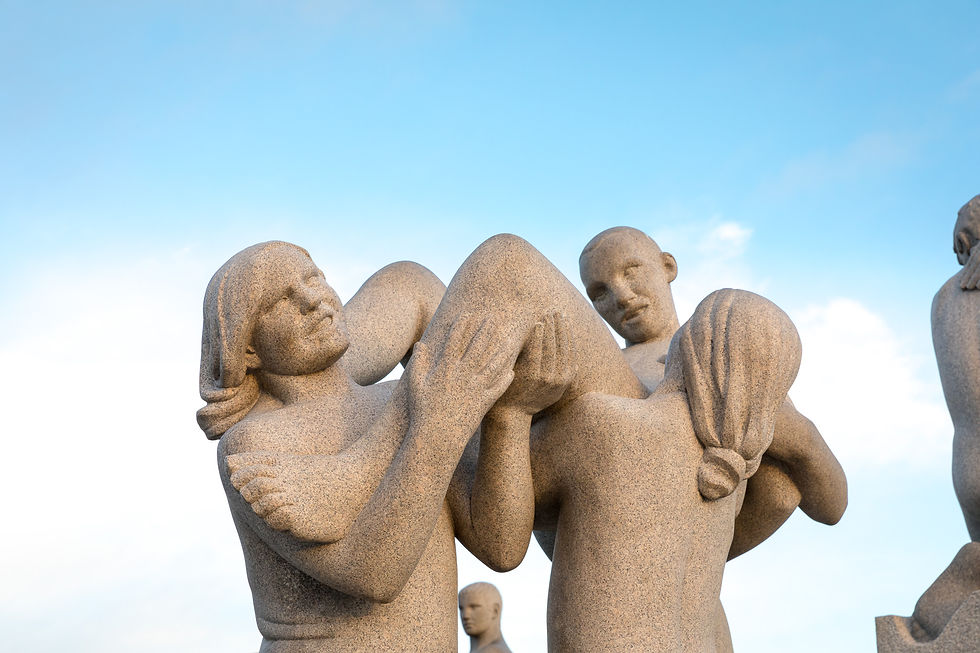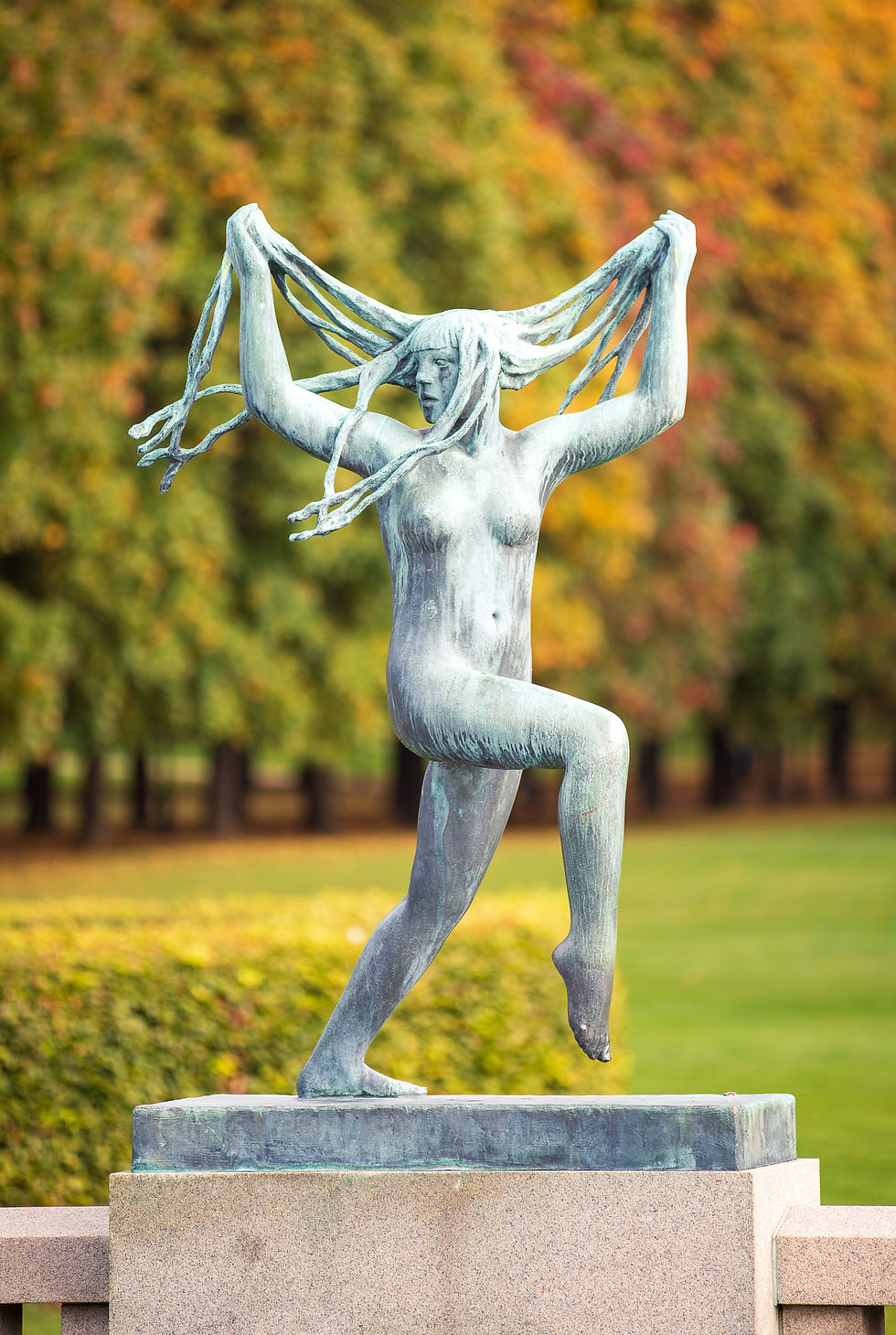Vigelandsparken - a sculpture park in the middle of Oslo
- Admin

- Oct 2, 2022
- 3 min read
Updated: Sep 17, 2024
In the western part of the Frogner Park is Gustav Vigeland's sculpture park. It contains most of Vigeland's sculptures and is Norway's most visited tourist destination. In 1924, the City of Oslo donated his place to a monumental sculpture of sculptor Gustav Vigeland in what is today Frogner Park. The sculpture was called the Fountain.


It consists of six men who carry a large barrel of water, and 20 groups of humans and trees around.

Eventually, the park was expanded with several other sculptures. In total, the park has 214 sculptures with 600 figures, as well as bronze reliefs, bridges and terraces.

One of the most famous is the Main Portal Hovedportalen, the Bridge Broen, the Life Wheel (Livshjulet), the Genus Slekten, and the 17-meter-high Monolith Monolitten with 121 figures visible from most of the park area.

Most of Vigeland's sculpture production is situated in Vigelandsparken. He was central to the design of the entire park area, but had no plan from the start.

Both green areas and sculptures were developed by the artist over a period of 40 years of his life.

The sculpture park covers an area of 320 acres centrally in the Frogner Park. On the edge of the pool around the Fountain, you will find a number of bronze reliefs.






The park has many beautiful alleys with old, large trees. Sculptures have been set up in open areas or intersections. Vigeland's vision was to create a synthesis between art and nature.


In the west there is a small bridge with railings that couples have attached padlocks to as a symbol of their love for each other.

Flowers, terraces, hedges and trees are important elements of the park.





Gustav Vigeland made sculptures and art in granite, bronze and wrought iron.



In several places, groups of benches have been set up. These can be "purchased" by the audience. Then you get a small plaque on it with your name ingraved.

Although the park has many visitors at times, there are so many benches that you will always be able to find a free bench to rest or meditate.

When you enter the main entrance to the park, you first come to the Bridge Broen - a bridge over the Frogner ponds made in granite with a total of 62 sculptures.

Here there is a daily arrival of lots of busses with tourists the year around, often having guided tours on the premises.

The most famous of the bridge figures is probably the Sinnataggen - the little angry boy, but there are also several other iconic works.


In the corners there are granite sculptures of humans and lizards.

Vigelandsparken is part of the Frogner Park, which is Oslo's largest park with an area of 460 acres. The area was originally Ankergården Frogner Hovedgård.

The Frognerparken has approx. 3,000 trees, many of them over 250 years old. Alleys have been made with tall trees on the sides of the walkways that cross the entire park.

The Frognerparken Rosarium is also worth a visit with its 14,000 roses and more than 150 species of roses.

The Frognerparken is beautiful in all seasons. The interaction between art and nature changes with the colors of the season.




The Frognerparken is a place you go through on your way to and from work, a place you jog or walk, a place you enjoy alone or with others.

More excursions: www.turideer.com
Excursion of the week: the Frognerparken with Gustav Vigeland's sculpture park.
Suitable for: Everyone. Stroller and wheelchairs will be fine in most places.
Get there: By car it is easiest to drive to the Frognerbadet and park there. Search for Frognerbadet on Google Maps. There is a limited number of parking spaces, so it is best to take the subway to Majorstua station, cross Sørkedalsveien by foot and follow Fridjof Nansen's way past the Colosseum cinema.Then you will come to a side entrance to the Frogner Park that leads straight to the sculpture park. It is only 400-500 to walk meters from the station.




Comments